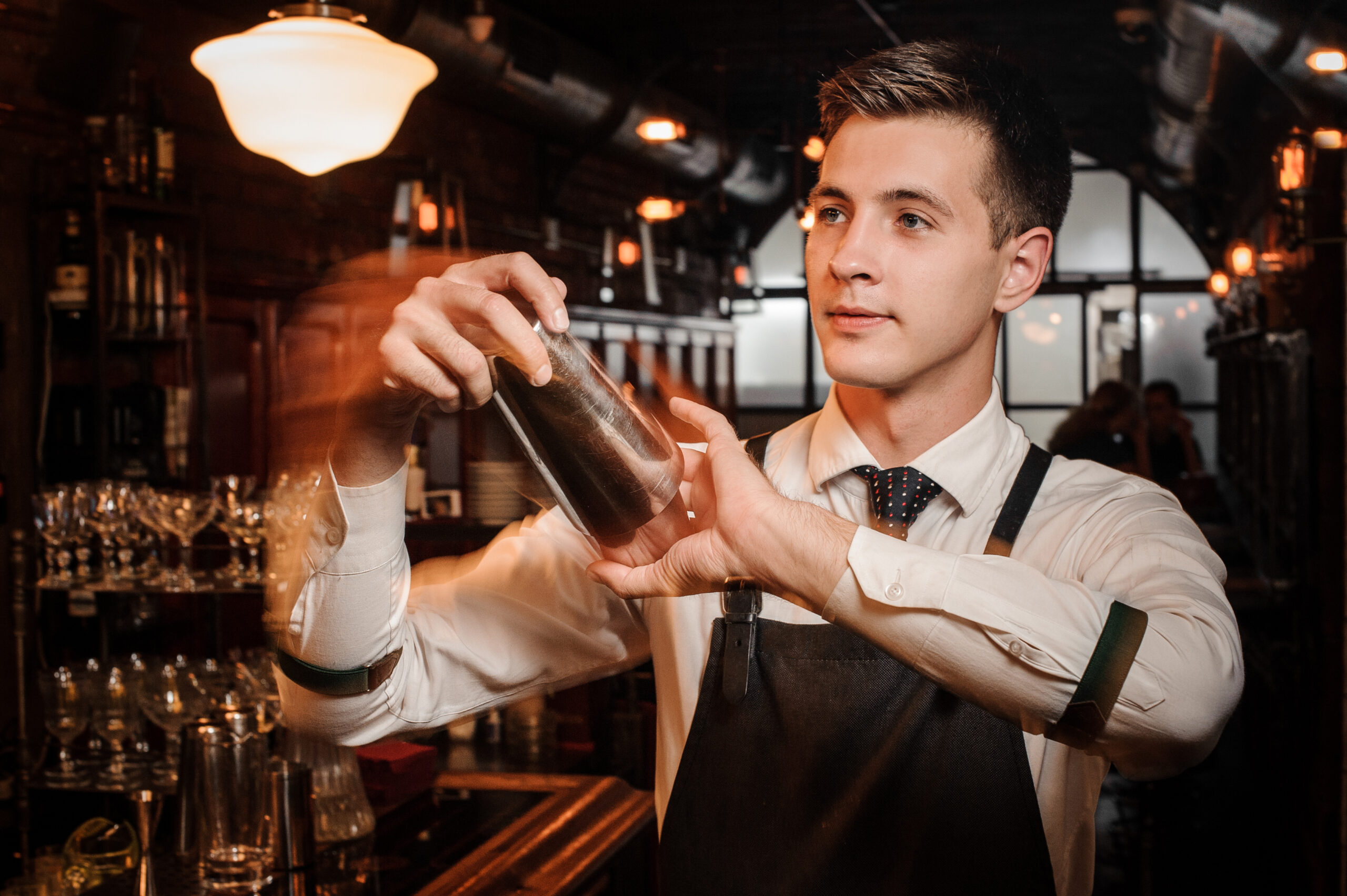Professional bartenders all agree that certain cocktails benefit from advanced mixing techniques. One of these techniques is called the “dry shake”. What does it mean to dry shake a cocktail, and what cocktails are ideal for this method?
In this guide, we will explore the dry shaking method, allowing you to craft flavorful beverages for your next gathering or event.
What is a dry shake technique?
In simple terms, a dry shaked cocktail is one where the ingredients are mixed at room temperature before the addition of ice cubes to the shaker. Typically, when you dry shake a cocktail, the ingredients are mixed (shaken) in the shaker for 30-60 seconds.
After the initial dry shake, ice is added to the shaker and the mixture is shaken for a second time, usually for 10-20 seconds. This second shake cools the mixture. Then, the drink is poured into a cocktail glass and served.
Why is dry shaking cocktails preferred over other methods? When you add ice to the shaker, the melting ice both chills and dilutes the mixture, potentially ruining the melding flavors of your favorite cocktail.
Cocktails, such as egg white drinks or with an ingredient known as aquafaba (chickpea water) are designed to be frothy, with an almost creamy appearance and texture. Dry shaking brings out that silky characteristic, whereas ice cubes in the shaker can harm the finished cocktail. Done correctly, a dry shake produces a drink with a mousse-like texture.
Be prepared to apply a bit of elbow grease to the dry shaking method. Your goal is to create a smooth, frothy, and delicious finished product. One point to remember: There is such a thing as too much shaking, leaving the cocktail too frothy (or foamy). With practice, you’ll learn to apply just the right amount of agitation.
Reverse Dry Shake
As with any advanced bartending method, there are variations to the dry shake. One of these is known as the reverse dry shake, which is ideal for egg white cocktails. In this method, all ingredients (including ice) except for the egg white are added to the cocktail shaker, then a vigorous shake takes place for about 30 seconds.
Then, the mixture is strained to remove the ice. It is best to use a fine mesh strainer to remove any chips or shards of ice. Egg white is added to the cocktail shaker, then the mixture gets another vigorous shake. The egg white blends smoothly with the remaining ingredients for a perfect frothy consistency.
Classic cocktails like the Ramos Gin Fizz and the Whiskey sour (with egg whites) are best made using the reverse dry shake method.
Hard Shake
Claimed as a truly advanced preparation method, the hard shake was invented by a bartender named Kazuo Ueda. This method involves shaking in a circular swirling fashion rather than end-to-end.
Bartenders who use this method argue that the hard shake helps control the temperature, dilution, and aeration of the cocktail ingredients, particularly in a drink like an egg white cocktail. The idea behind this shaking method is that it is less violent than a standard shake (despite the name); although there is a strong debate whether this method truly produces measurable differences in the finished product.
Wet Shakes
As the name implies, a wet shake is one where all the cocktail’s ingredients are combined with ice in a cocktail shaker and mixed before serving in a glass. Adding ice to cocktail shakers ensures that the drink will be perfectly chilled before serving.
The bar industry is most familiar with the wet shake; in fact, wet shaken cocktails are perhaps the most common in all of the bartending practice.
What is the best dry cocktail shaker?
For dry shaken cocktails, discerning bartenders can agree on one thing: Not all shakers are made alike. To produce more foam, more control, and better straining of ice (especially with a dry shake), a three-piece drink shaker is often preferred, which is fascinating because it’s rarely used in retail bar environments. The three pieces include the body, the strainer, and a cap to keep liquid ingredients from leaking or spilling. Pair it with a fine strain, and you’ll get one very luxurious cocktail.

